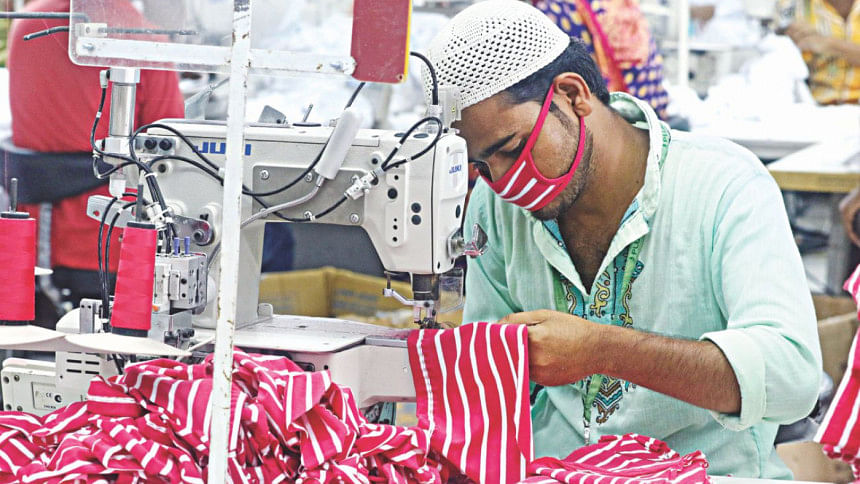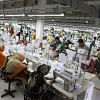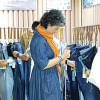A case for technological development in apparel sector

The government of Bangladesh is moving ahead with a plan to establish 100 Special Economic Zones by 2030. Construction on some zones has already begun, including one in Mirsarai of Chittagong where 500 acres of land have been set aside as a dedicated zone for the garment industry after the signing of a Memorandum of Understanding (MoU) between Bangladesh Economic Zones Authority (BEZA) and BGMEA. This project is expected to attract both local and international investment and generate some 150,000 new jobs over the next two years.
While these recent endeavours should be applauded as the new zones will come to represent the future for the Bangladeshi textile and garment manufacturing hub, it is time to consider what factors should be prioritised by the BEZA while constructing the zones and the agreements that will be made with the companies that invest in the sites after they are established.
There are several fundamental elements that must be considered when the development of each zone commences. The zones, it goes without saying, need to have access to an uninterrupted supply of power and other utilities including gas and water, and construction of the sites needs to follow the highest possible international standards. Companies taking plots within the zones must abide by the highest ethical and environmental standards.
In addition, one area that needs to be especially promoted and developed is that of technology for businesses within the economic zones. To cite a recent interview of Gerry McGovern, Design Director and Chief Creative Officer for Land Rover cars: "You need to embrace technology to elevate the desirability of the product, to make it safer, faster and more modernist."
This thought-process is one that needs to be embraced when setting up our next stream of economic zones. As a nation, we can no longer rely on the appeal of lower labour costs to attract and develop business. We need to embrace technology from top to toe in the garment cycle—from fabric development and concept design to cutting and sewing technology, adoption of technology-aided washing and finishing machinery, to purchasing and delivery systems, all of which will improve our efficiency and competitiveness in terms of price as well as the overall quality of product, and result in a reduction in lead-times to customers.
Technology, if used correctly, can greatly improve the whole production cycle and the wellbeing of the workforce. What needs to be established is a strategy for the economic zones that promotes the use of technology and encourages companies to invest in the necessary technical infrastructure to ensure that this next phase of development is fit for purpose in the years to come. This will require careful consideration and, possibly, on a case-by-case basis, as different manufacturing companies will require different forms of technological support.
It may also be necessary to offer incentives to secure the necessary investment in technology. Furthermore, there should be guidelines to ensure the necessary training and development of the workforce—to both appreciate and become skilled in the use of technology—and also to ensure that appropriate technological aids are in place. Companies that agree to take plots within the economic zones should be asked to utilise an agreed level of technological sophistication and guarantee the appropriate training and development of the relevant workers.
BEZA and all other interested parties would do well to consider the adoption of an approach similar to that adopted by the Indian government. At the beginning of 2016, the Indian government developed a system called Technology Upgradation Fund Scheme (TUFS). This scheme was established to promote ease of doing business within the country, and with the specified aims of generating employment within the textile and garment manufacturing industries as well as promoting exports made in India with "zero effect and zero defect". In short, the scheme was established to facilitate the augmentation of investment, productivity, quality, employment and exports, together with import substitution for the textile and garment industries.
Through the scheme, textile (spinning, dyeing and weaving) companies and garment manufacturers can apply for a Capital Investment Subsidy (CIS) for investments made in machinery and technology to meet the benchmark laid out in the scheme. Technological upgradation has been defined in the TUFS as "the induction of state-of-the-art, or near state-of-the-art" technology by the textile and garment industries, and the levels of performance that the machinery and technology must attain are reviewed and updated on an annual basis. By adopting this approach, the Indian government ensures that investors are committed to the introduction of the highest grade of machinery and technology that are available and are also willing to accept the overall challenge of the upgrading of their finished product, with the added benefit of having the possibility to diversify into other textile or garment segments.
The establishment of the new economic zones within Bangladesh is a great initiative. We need to now ensure that the developments run hand in hand with the technological advances to ensure a bright future for our industry. We need to show the world that we are preparing for the future market demands, have a fit-for-purpose business model, and are investing in an advanced garment industry that has foundations guaranteeing longevity, encouraging further investment from both local and international companies.
Mostafiz Uddin is the Founder & CEO of Bangladesh Apparel Exchange (BAE) and Bangladesh Denim Expo, and the Managing Director of Denim Expert Limited.
Email: [email protected]








Comments